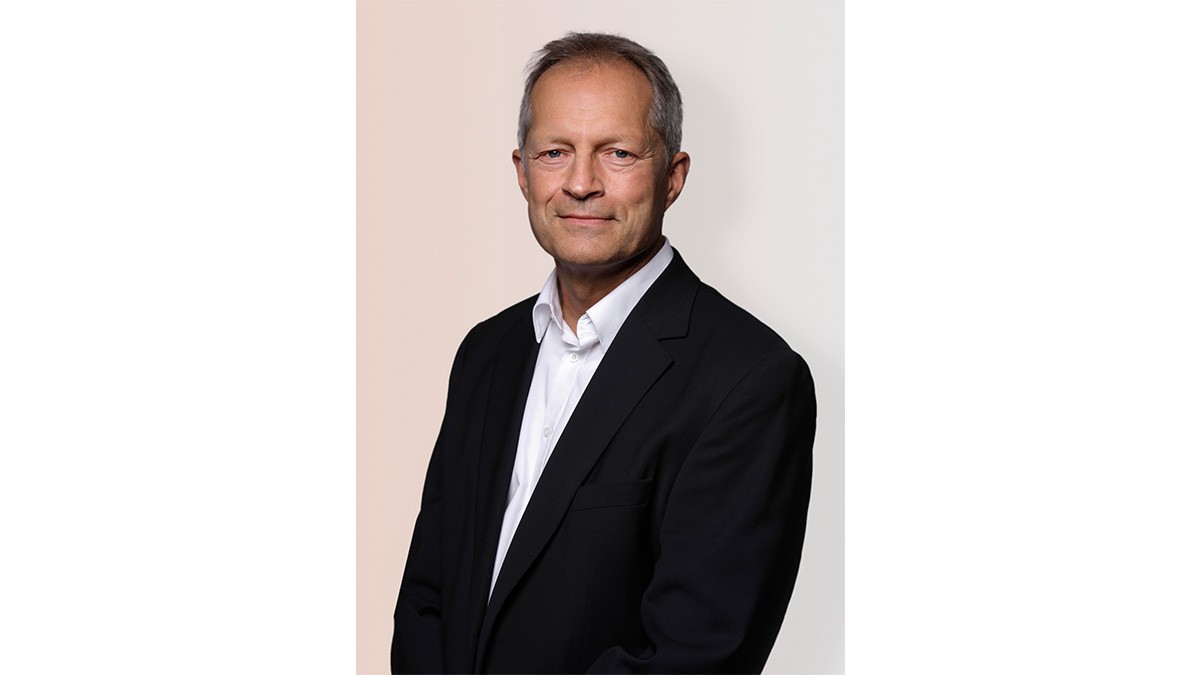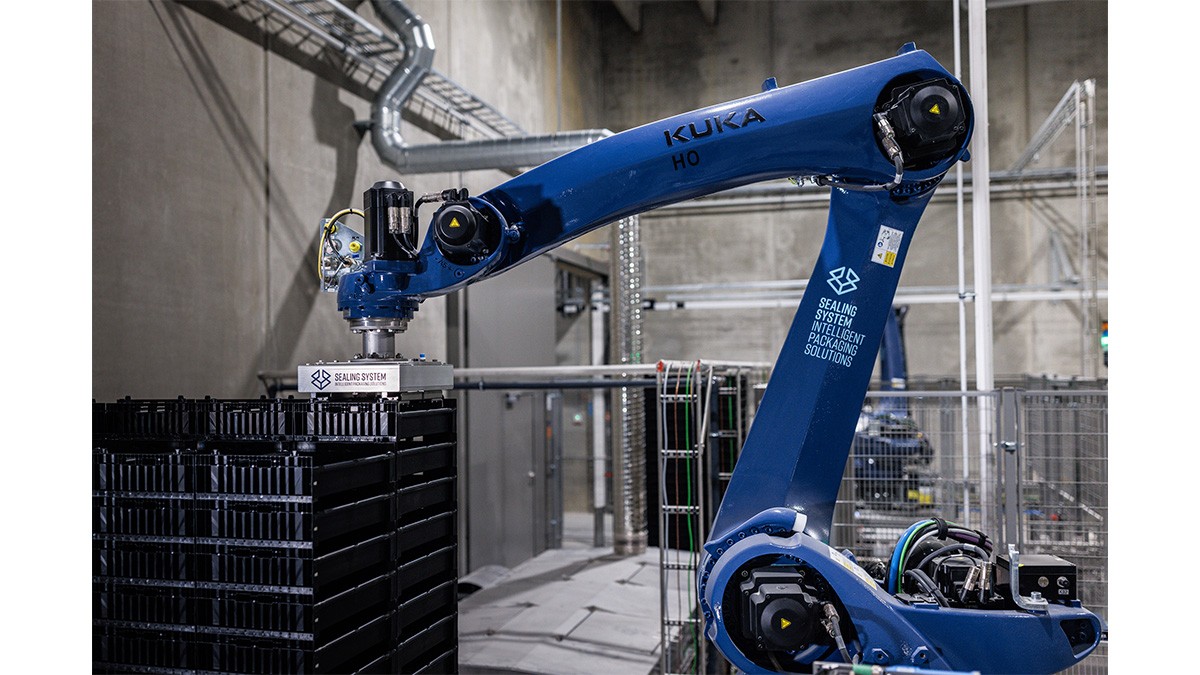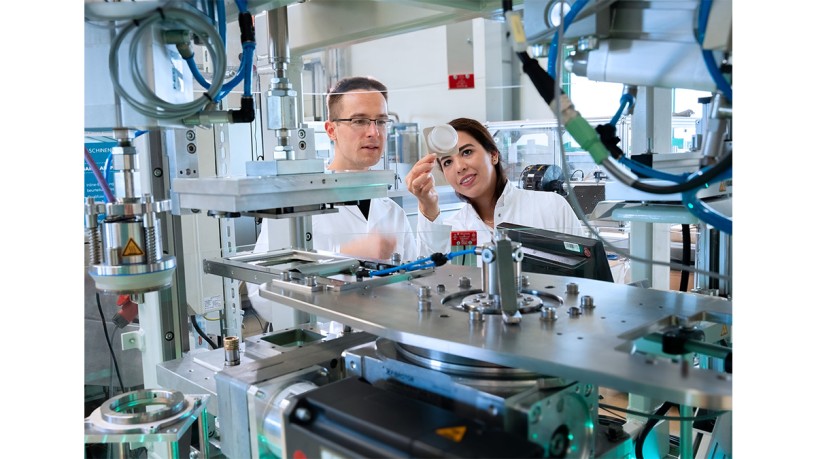Palletising 4.0 in the Food Industry
Image processing and AI ensure quality
KUKA also emphasises the importance of modern camera systems. 3D colour cameras are used in particular for depalletising and palletising mixed pallets, as are typical for deliveries to food retailers. In addition to the position, they also recognise the shape and surface of the products and automatically sort out damaged or crushed boxes. This improves not only quality but also process reliability, as manual intervention is reduced. Downtime is avoided, which also benefits the cycle time. Deep learning-based image processing can also be used, for example, in meat quality assessment, leak testing of vacuum packaging, or in catering applications. Furthermore, stereo vision systems and structured light enable the reliable detection and gripping of transparent or highly reflective packaging – applications that would be virtually impossible without these technologies.
Flexibility through software and modular systems
When it comes to flexibility, KUKA relies on software solutions that allow palletising strategies to be quickly adapted even without a knowledge of programming. With the KUKA.FlexPal application, users can configure complex packing patterns, product sizes or gripper types via a graphical interface using drag-and-drop. "New palletising patterns or products can be configured in parallel with ongoing production – completely flexibly and without downtime," explains Dieter Rothenfußer, Key Technology Manager. In addition, KUKA.PickControl enables dynamic load distribution and synchronisation of up to ten robots on multiple conveyor lines. The solution is specially designed for fast pick-and-place applications, such as those frequently found in food packaging. KUKA therefore offers a software architecture that reduces operating effort while at the same time making highly complex multi-robot applications manageable.
Hygiene requirements determine the technology
KUKA addresses hygiene requirements with so-called HO (Hygienic Oil) robots. All lubricants in these systems are NSF H1 certified, meaning they are food-grade and do not present a health hazard, even if they come into accidental contact with food. This significantly reduces the risk of contamination in the production process. Typical areas of application are secondary food processing, such as packaging, palletising or sorting. At the same time, the robots are designed so that they can also be used for open product handling, for example in bakeries or with chocolate. As large food companies also impose the highest hygiene standards on their packaging suppliers, demand for HO robots is also growing in these areas.
Practical projects demonstrate the range
KUKA subsidiary Swisslog built a highly automated logistics centre in Wustermark, Germany for the dm retail chain. Here, 7 palletising robots from KUKA with special gripper technology are responsible for picking mixed pallets for daily branch deliveries. The pallet pattern takes into account carton type, weight, stability and branch layout. The individual packages are sequenced and stacked based on this. The facility was awarded the European Logistics Prize in 2021.
KUKA cites its collaboration with ENORM Biofactory and XIO Intelligent Farming in Denmark as another example. Six KR QUANTEC PA HO robots are in use there. They automatically transfer crates of larvae during the growth process of the black soldier fly – up to 500 crates per hour. The insect meal is later used for animal feed, and the entire facility is monitored by just two employees. Both projects illustrate how palletising technology contributes to increased efficiency in a variety of areas, from traditional retail logistics to insect breeding.
About KUKA
KUKA, based in Augsburg, Germany, is one of the world's leading suppliers of robotics and automation technology. The company was founded in 1898 and developed from an acetylene gas plant to a welding technology company and then to a specialist in industrial robots. Today, the product range includes various robot models and automation systems that are used in sectors such as the automotive industry, medical technology, electronics, logistics, consumer goods and food. In the food industry, KUKA products and solutions are used, among other things, for palletising in large bakeries, where efficiency and hygiene requirements are equally important.

Contact for additional information:
Dieter Rothenfußer
Key Technology Manager Consumer Goods/Food
Industry Management DACH
KUKA Deutschland GmbH
Zugspitzstraße 140,
86165 Augsburg,
Germany
Dieter.Rothenfusser@kuka.com;
www.kuka.com




